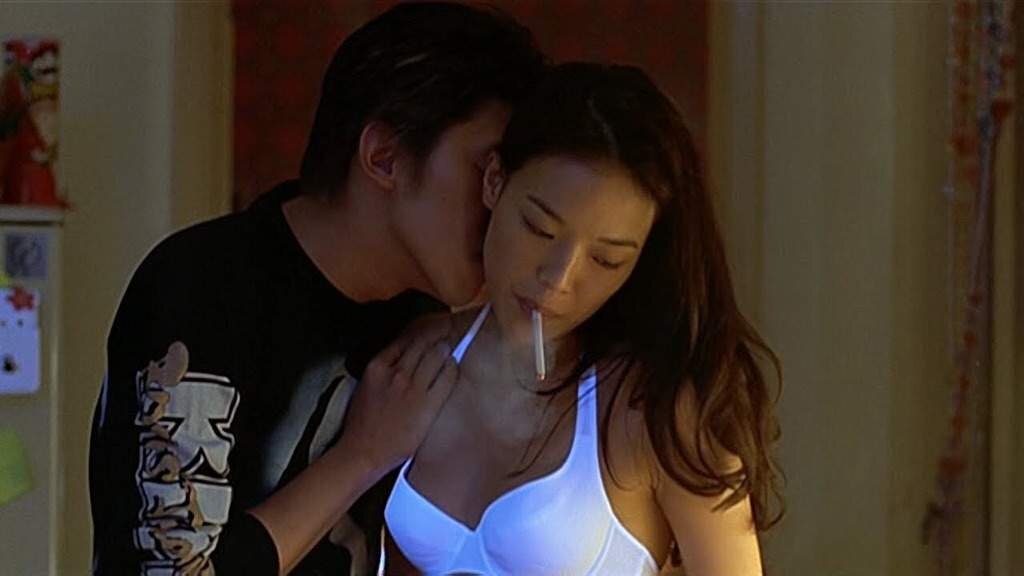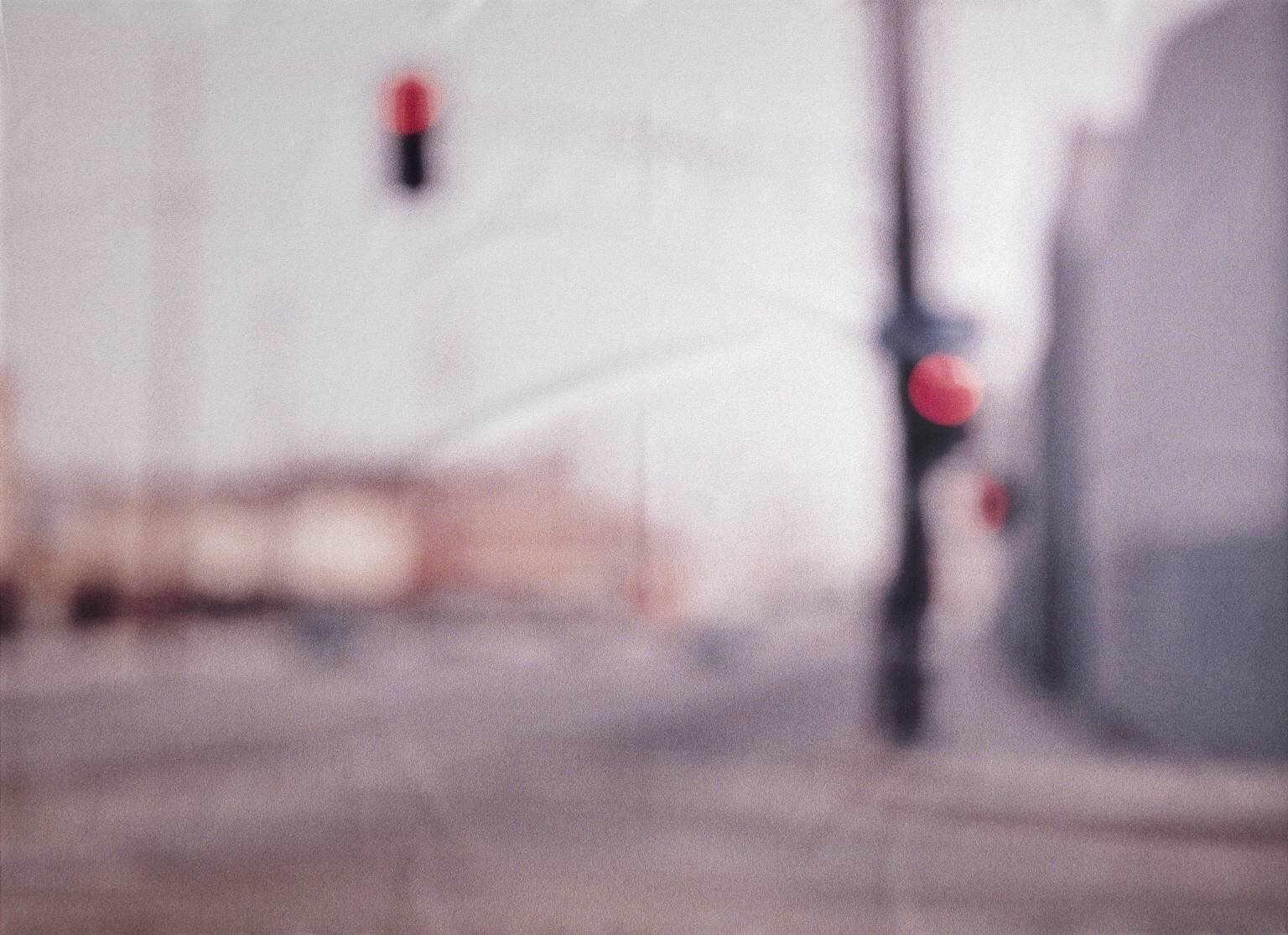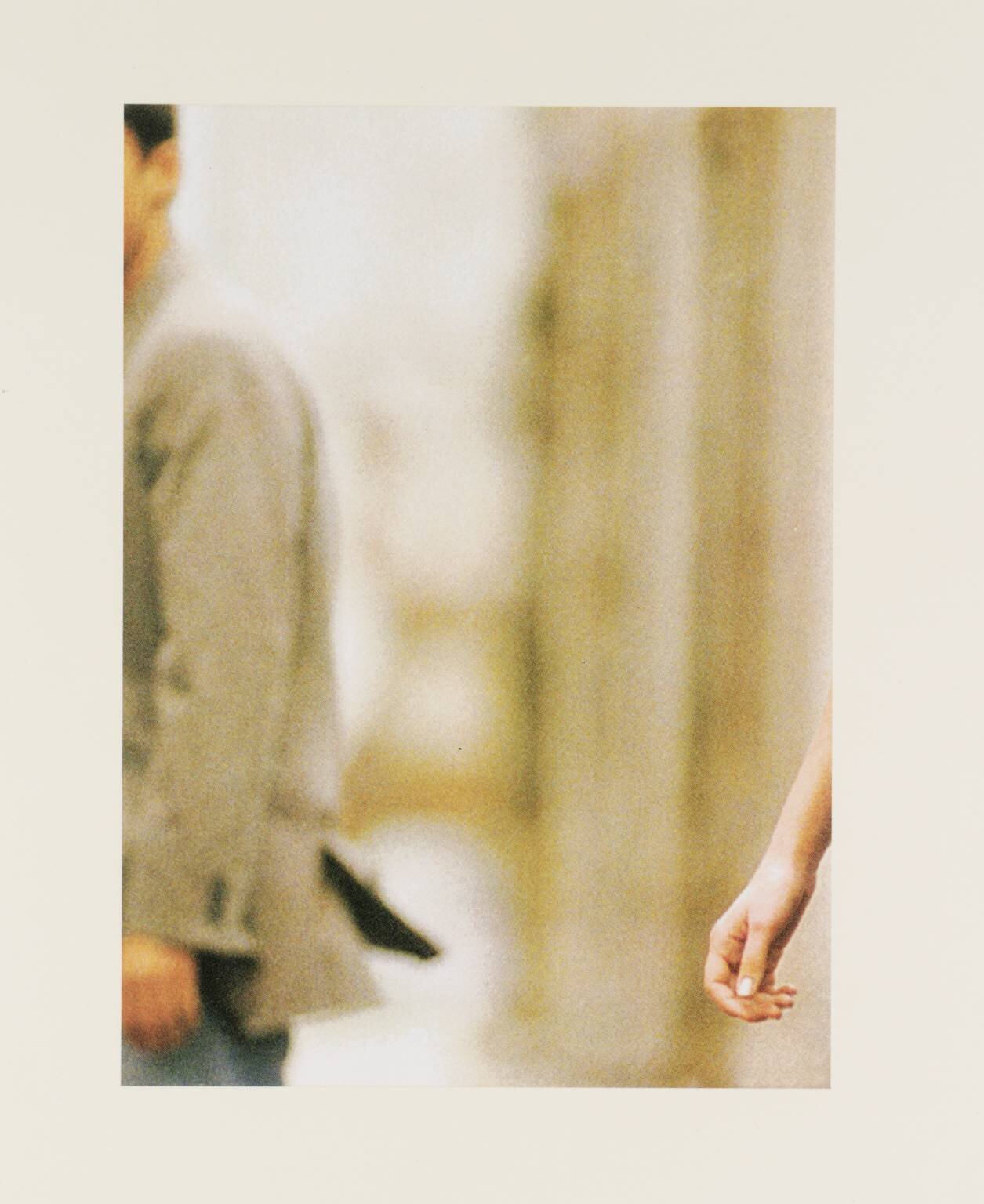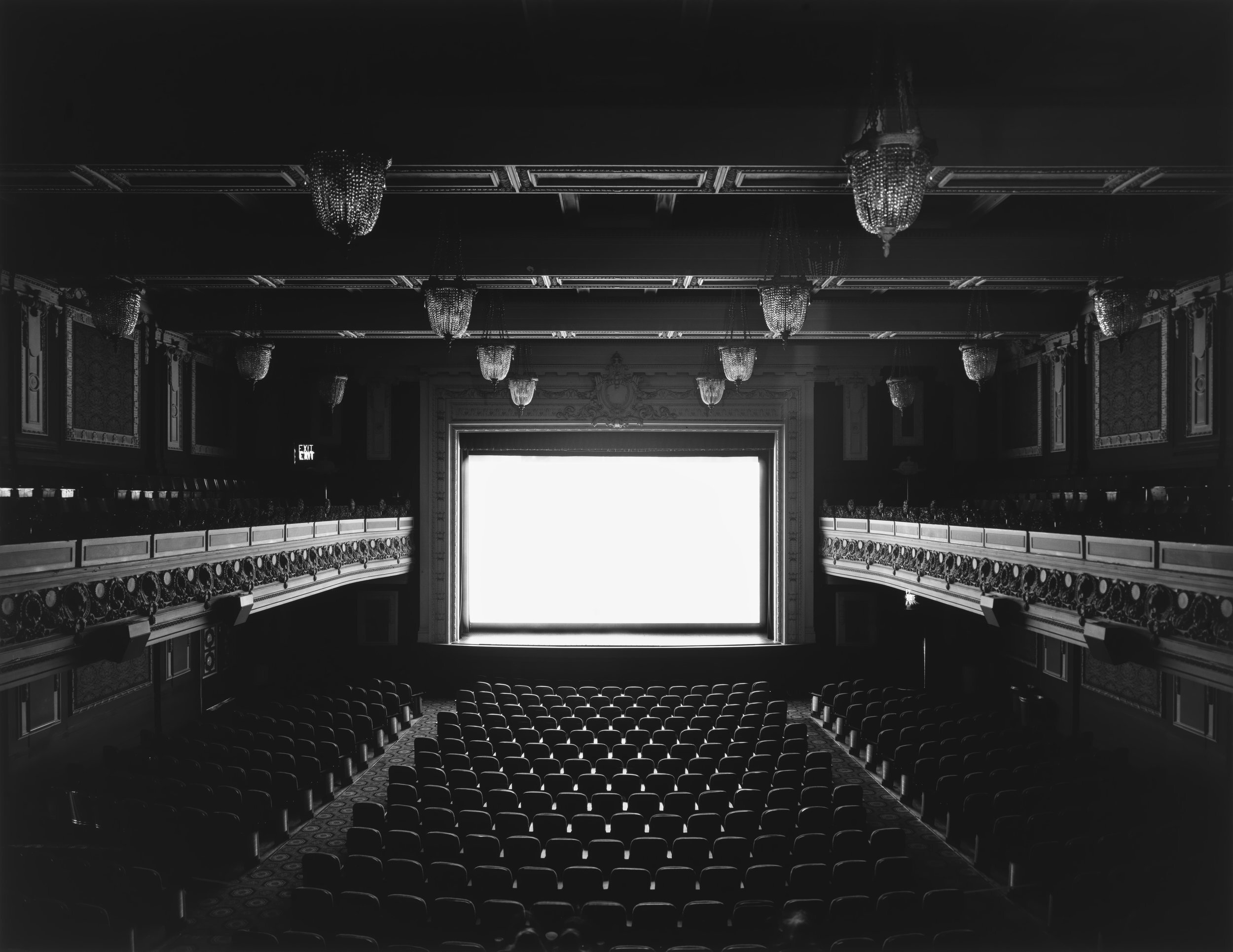MILLENNIUM MAMBO at 20: Blindness of the Present
by Éireann Mannino, Contributor
The blend of director Hou Hsiao-hsien, writer Ti’en-wen Chu, cinematographer Mark Lee Ping-bing and actress Shu Qi, which resulted in the triptych of Millennium Mambo (2001), Three Times (2005) and The Assassin (2015), are doubtless the foundational architects of my cinematic journey. To say where the script, performances, cinematography and direction begin or end in these works is especially impossible. They bleed into one another so inextricably, so amorphously, so completely. The are a single thing, transient, spacious, fluid. In the case of Millennium Mambo, I would extend that exceptional synergy to Yoshihiro Hanno’s score and James David Goldmark’s Art Direction. It seems like an obvious thing to say, that a film is the result of many efforts and disciplines, but sometimes they come together in a seamless way that you sense rather than notice. Millennium Mambo is one of those cases.
Millennium Mambo, Shu Qi’s debut film with Hou, turns 20 years old this year of 2021. Looking back, as the film itself does, I take this opportunity to sift through the confused and meandering prose I once wrote about Millennium Mambo, teasing out what I think I meant at a time when Taiwan New Cinema I was cracking my head open to cinema’s purest potentiality. This piece will read as an untidy sequence of snippets, observations, theories and impressions that have only a vague or tenuous linearity. Some of these ideas may be reiterated, recapitulated throughout, but regardless they lead deeper into the fabric of this magnificent and pure work about a young woman looking deeply at herself, with fairness and forgiveness, sifting through the traumas and mundanities that have shaped her.
Vicky (Qi) drinks, smokes, and dances. She passes the time in a kind of frenetic stagnancy. She ensconces in the neon pulsation of club after club, a desensitizing escape from the suffocation of her apartment and her psychologically abusive boyfriend. However the stimulus around her is like a miasma. The colors, lights, synth and pulse of her diversions become an extension of her confinement and an expression of the dissonance of her world. Hou uses the all the sensual and structural elements of cinema to give both liminal and subliminal life to that dissonance, in what may be his most vital and intimate work.
Her live-in boyfriend, Hao-hao (Chun-has Tuan) is a neurotic and jealous recluse, constantly suspecting Vicky of infidelity and invading her privacy to feed that insatiable possessiveness. Every time she returns home he strips her down and smells her body for the scents of other people, roots through her purse and wallet, and even calls the numbers of suspect receipts, searching for someone to blame for his profound dissatisfaction. Vicky endures this mistreatment, repeatedly breaking up with Hao-hao only to return, hypnotized by the pendulum of his insistence, pulled in by the vacuum of his constant implosion.
The second man in Vicky’s life is Jack (Jack Koa), a gangster, indeterminately older, who meets Vicky at Club Spin and goes from a peripheral presence to a best friend during the course of the year. He in some ways plays a paternal role in Vicky’s life during her detox from Hao-hao. Their relationship is chaste, and Jack emanates a sense of sincerity, dedication and caution. Ever the negotiator in his precarious line of work, Jack’s mind and intentions are both clear and veiled always. Careful with his words, he creates a safe space for Vicky and needs nothing from her in return.
Vicky, Hao-hao and Jack are the specific players at the of an immersive and oblique story that churns in a sensual medium of techno beats, black light, and human behavior. Though seeming to stand relatively still, Millenium Mambo actually moves at the speed of synapses as a story told in the theater of Vicky’s memory, as recalled from the year 2011. The nature of Vicky’s active recollection through voiceover narration channels a kind of wildly intimate post-modernism scarcely tapped in Hou’s career (save for Good Men, Good Women) because we are imbedded deep inside the act of remembrance, beyond mere flashback. Vicky speaks of herself in 3rd person, as if to say she is no longer that trapped soul which we observe, just as she observes.
Hou establishes Millenium Mambo’s subtler non-linearity with the opening two minute shot. A floating lens follows behind Vicky as she strolls, unfettered and buoyant, through an enclosed nocturnal skywalk, perhaps the freest she will ever appear in a film that is only periodically punctuated by her joy. Bright neon-blue light saturates the scene from overhead fixtures, and the narrow space takes on a kind of spinal affect, which plays well into the idea that we are riding the arc of her impulses. She looks at the city around her through the arched openings. She looks behind, at the viewer but also past them, to where she has come from. Eventually, the camera stalls and Vicky leaves us at the top of a flight of stairs as she continues onward. In this act of stopping, Hou intimates something important–that Vicki's world is not confined by the frame, nor by the duration of a scene, nor the parenthesis of the film itself in either direction. pressing onward in time but also reaching backward to a past we have yet to see for ourselves. This lends an additional layer of realism to the film. Hou uses the heretofore closed-text medium of a film to render an open-text–expanding our notions of film as spatially confined, to where cinema includes that which lies beyond the spatial border and depth of the frame and the temporal border of the duration.
The first image of Vicky and Hao-hao’s studio apartment is an out-of-focus panning shot of blurred colors and vague architecture. The camera racks slowly into focus as Vicky has arrived home from a night at the club. We do not see her enter, rather that she has just entered, establishing a sense of containment opposite the free floating opening shot and the effervescence of a night out. In this way, Vicky’s walk along that corridor could read like a penetration into the well of memories. Seen this way, it is nearly as suggestive as the opening shot of David Lynch’s Mulholland Drive (2002) in which the camera describes a first-person view of someone crawling into bed, easing into their pillow and literally falling asleep into a dream which structurally predominates the film’s brooding length.
Par for the course with Hou Hsiao-hsien’s cinema, Millenium Mambo makes judicious use of cuts. Each scene derives its energy, tension, appeal and substance from a language of elliptically photographed banalities; hanging around in clubs, domestic quarreling, cleaning up an apartment, smoking, making drinks, cooking. Hou's films carry the natural pulse and texture of their time and place, and he makes it clear in his aptitude for the peripheral world, that that pulse extends (and draws from) sources beyond the confines of the narrative. Where the discursive and causal nature of most cinema is in a sense delimiting by virtue of its accrual of hard “facts” that actually reduce our imagination, Hou’s cinema is one of great volume and patience. It respires.
For characters like Vicky and Hao Hao who are lured and lulled by the literal pulse of club music, they are completely out of sync with the pulse within their own lives and their relationship to the world. They build conflict and suspicion upon vice and aimlessness. Mark Ping-bing Lee is able to capture that feeling of emotional / biorhythmic divorce with a lingering yet drifting camera that plays with depth of field.
The perspectival framework of Vicky–audience to her own history in 3rd person - forgives one recollection in which she is asleep at Jack’s apartment, during which we watch him returning late from a “meeting,” picks up her littered items in the hallway, suspiciously inspects his apartment, drapes a blanket over Vicky, smokes a cigarette, places his gun on the coffee table, and contemplates his predicament. Though she is unconscious as this event unfolds, Vicky defaults to a kind of surrogate authority in the security camera. Lee's lens first trains on the hallway security monitor. Jack approaches, sees Vicky’s purse on the floor, and notes with caution that the door is open. The camera pans away from the monitor and into the room as Jack enters with an unbroken continuity of action and non-dualistic space. This is the third time this exact shot has been used, with prior instances of Vicky entering Jack’s place. The security camera connotes Vicky’s entire process of self-watching that constitutes the film itself; a person looking through a camera, looking through the eye of another camera.
Future Vicky’s recollections of her past are imbued, not with regret or judgment, but with deconstruction. She describes situations from her past before they happen on-screen; a gentle blindside to the audience as she virtually directs her own thoughts. Her preemptions of events through narration also indicate that she suspects where her train of thought is going to lead whilst also allowing the thoughts to sprawl.
This play with asynchronous flashback may have its seed in Hou’s more autobiographical film The Boys from Fengkuei (1982), when adolescent Ah-ching recounts a childhood memory of his father killing a snake with a baseball bat to friends, and shortly after, injected into a different scene, the memory is shown to us visually as memory in over-exposed faded sepia. Fengkueitherefore contains an impetus of what would flourish into its own entire mode in Mambo. The “precognitive” instance in Fengkuei differs only in that it is passive, where in Mambo it is active. Vicky gently constructs and critiques her memory as a structural function of the narrative, and Ah-ching simply experiences passing remembrances in thoughtful dazes. Both films allow the viewer into the heart of the act of remembrance though–Fengkuei as a tendency, Mambo as a rule.
Millenium Mambo abounds with simple photographic technique that has psychological and sensual impact; shots of close-up color fields, blurred focus, tight compositions, images of textured glass, techno music that bleeds across scenes, visual superimpositions (the color fields and blinking lights over Vicky’s face in the love scene between her and Hao-hao, which evokes similar moments from Keislowski’s The Double Life of Veronique), physical obstructions such as characters blocking one another or structures in extreme foreground set against focused backgrounds, cigarette smoke, images captured in mirrors, the bedroom threshold in the studio apartment obscured by beaded curtains, frames within frames formed by doors and thresholds that shunt compositions and characters off to extreme or minimal portions of the screen (which calls to mind Motokichi Hasegawa‘s work in Yoshida Kiju’s Eros Plus Massacre [1969]). Examples of the latter include scenes in Jack’s apartment; one is a medium-long shot of him cooking at a stove backlit by the pale blue light of a curtained window picture left. The kitchen is next to another room shown only as a sliver on picture right. These two sections of cool toned background space are divided by a blank section of wall. The faintly warm light on the wall panel implies the whole unviewed room from which the viewer’s vantage orients. Vicky enters the kitchen and cuts the visual and chromatic space with her red hoodie as she challenges a slender depth of field. The camera plays long this gradient as she goes back and forth into the room for odds and ends like chili sauce. This scene is ostensible domesticity, but it is in fact a kind of nurturing normalcy that has been absent from her life.
Hou maximizes a sense of confinement throughout Millenium Mambo both in choice of environments; a cramped studio apartment, bustling nightclubs, and the way in which those environs are shot. While maintaining relatively tight framings (ranging from close to medium shots as dictated by the characters’ movements within a space rather than the camera issuing the dictation) with narrow depth of field, the camera moves in unbroken floating movements and slow zoom ins/outs from fixed orientations. Rather than use tracking/dolly shots, Hou specifically underscores the limited mobility of the characters literally, and figuratively the limitations of memory.
A word on German artist Uta Barth’s photography and Ping Bin Lee’s cinematography. Their mutual proclivity towards blurred compositions (or compositional elements) and banal subjects (urban and domestic environs), or rather that subtler transient subjects/objects are inferred through technique, is the crux of their kinship. “The works that brought Barth to international attention, the series Ground and Field, presented photographic blurs caused by focusing the camera on an unoccupied foreground; these lushly colored images test connections between the descriptive clarity of photography and the haze of memory.” (Art Institute of Chicago) Lee and Barth posit that a subject/object may be rendered by inference or impression , rather than by exposition. The subject before Lee’s lens is that of Vicky’s flow of memories, where the intangible medium of her humanity and cognition hold the “unoccupied foreground” and Lee negotiates her’s/our proximity to the events.
Hou asserts that negation is often a means to assert. In his constriction of visual space and depth, Hou amplifies our perceptivity of dimensional space and posits that other aspects of space, and indeed time, are being explored. Lee’s focus racks are slow, but in that process of graduating focal depth to follow characters movements, the full dimension of rooms are actually explored, one finite plane after the other, akin to a kind of scanning via depth-of-field. Sometimes we pan across great swaths of color and texture in blurred closeup until we finally reach an object in focus, other times still, a character will move in space and the depth of field slowly catches up to them rather than keep pace constant pace. All of these visual inflections are expressions of space, time, proximity, memory and even mood. So much is being communicated sensuously, information that goes beyond mere presentation. This is perhaps the difference between aesthetic and art.
Raising comparison between cinema and photography elicits a basic concern. By nature photography is static and cinematography is kinetic. However photography demonstratively contains temporality, evident especially large format and long-exposure methods. Photographs describe parenthetical time. Cinema, though it unfolds with time, is itself a composition of many single photographs. One might consider the works of Photographer Hiroshi Sugimoto, who in his series THEATERS knits these two modes of temporality together (which connote memory almost explicitly). Sugimoto produced a number of long exposure images taken of movie screens for the duration of entire films. The result is several pristine glowing white movie screens, which are the blinding accumulations of light from each films projection. The theaters themselves, which for someone inside them at the time would have been dark and indistinct, are revealed in crisp detail by virtue of an equation of time and light. Here too the subject is implicit and transient, a distortion by virtue of technique. Entire films, sequences of thousands and thousands of still images, are captured in one single image, yet in the completeness and absoluteness of singularity the specificity of each is negated. The screens appear as radiant portals.
The final shot of Millenium Mambo, during Vicky’s Japan odyssey after Jack’s disappearance, is the deepest and widest composition in the entire film; a strikingly empty, nocturnal, snow-covered street; “Yubari’s Road of Cinema,” where a number of crows are seen fluttering about. Over top of this image, Vicky narrates. We arrive at this moment after a montage of old film billboards; Tora-san, Alain Delon, and Zatoichi, bringing temporality, photography, cinema, memory, and space to consolidation. While Hou reminds us that what we have just seen is a film – and for Vicky as well taking the 3rd person perspective of a viewer - he more pointedly suggests that memory (through the filter of our peculiarities of direction, design and temperament) is cinematic, and cinema (by its innately documentarian nature) is memorial. Implicit also is a correlation between memory and space, where the vintage billboards of films line the upper tiers of an open street.
Drawing everything that one can from what Hou selects to be shown, there is wonderful significance his choice of Zatoichi, a blind swordsman with an indistinct past who’s senses and spatial awareness are attuned around his disability, and Tora-San, an iconic drifter who drinks too much, repeats deplorable behaviors, and constantly returns to his home, both of whom bear much in their analogy to Vicky.
Millenium Mambo is available to rent on Youtube, Amazon and iTunes.











